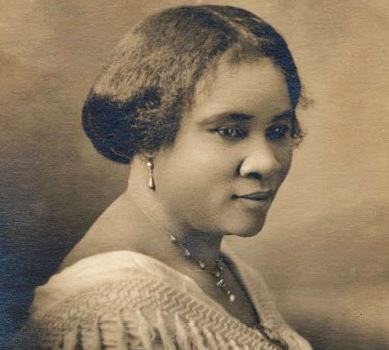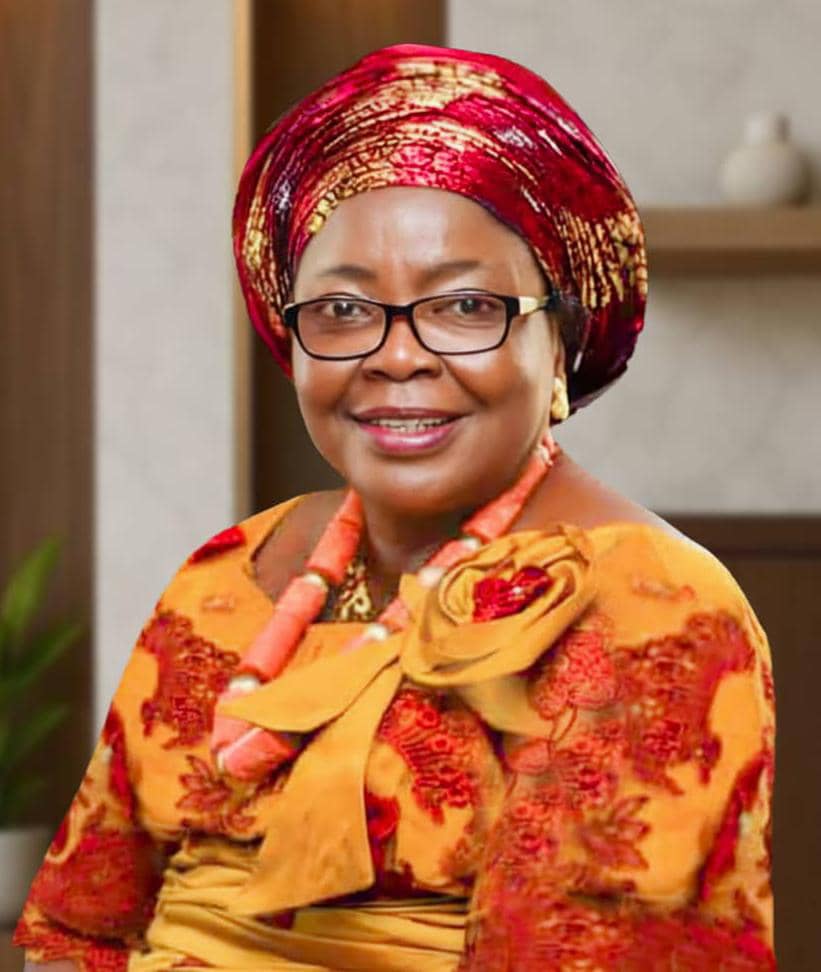MADAM C. J. WALKER, The First Female Self-made Millionaire in America

Did you know that Walker was the wealthiest African-American woman in America considered to be worth between a half million and a million dollars at the time of her death on May 25, 1919?
Madam C. J. Walker (born Sarah Breedlove on December 23, 1867) was an African American entrepreneur, philanthropist, and political and social activist, recorded as the first female self-made millionaire in America in the Guinness Book of World Records. While multiple sources mention that although other women like Mary Ellen Pleasant might have been the first, however, their wealth is not as well-documented.
➡️ From Sarah to Madam Walker
In 1882, at the age of 14, Sarah married Moses McWilliams to escape abuse from her brother-in-law, Jesse Powell. Sarah and Moses had one daughter, A'Lelia. When Moses died in 1887, Sarah remarried in 1894, but left her second husband, John Davis, around 1903. In January 1906, Sarah married Charles Joseph Walker, a newspaper advertising salesman. Through this third marriage, she became known as Madam C. J. Walker ("Madam" was adopted from women pioneers of the French beauty industry), a version of "Mrs. Charles Joseph Walker". The couple later divorced in 1912.
➡️ Road to entrepreneurship
In 1888, she and her daughter moved to St. Louis, where she found work as a laundress, earning barely more than a dollar a day. She was determined to make enough money to provide her daughter with formal education. During the 1880's, she lived in a community where Ragtime music was developed; she sang at St. Paul African Methodist Episcopal Church and started to yearn for an educated life as she watched the community of women at her church.
Sarah suffered severe dandruff and other scalp ailments, including baldness, due to skin disorders and the application of harsh products to cleanse hair and wash clothes. Other contributing factors to her hair loss included poor diet, illnesses, and infrequent bathing and hair washing during a time when most Americans lacked indoor plumbing, central heating, and electricity.
Initially, Sarah learned about hair care from her brothers, who were barbers in St. Louis. Around the time of the Louisiana Purchase Exposition (World's Fair at St. Louis in 1904), she became a commission agent selling products for Annie Malone, an African-American hair-care entrepreneur, millionaire, and owner of the Poro Company. Sales at the exposition were a disappointment since the African-American community was largely ignored.
While working for Malone, who would later become Walker's largest rival in the hair-care industry, Sarah began to take her new knowledge and develop her own product line. In July 1905, when she was 37 years old, Sarah and her daughter moved to Denver, Colorado, where she continued to sell products for Malone and develop her own hair-care business.
➡️ Going independent
A controversy developed between Annie Malone and Sarah because Malone accused Sarah of stealing her formula, a mixture of petroleum jelly and sulfur that had been in use for a hundred years. She marketed herself as an independent hairdresser and retailer of cosmetic creams. Her husband, Walker, who was also her business partner, provided advice on advertising and promotion; Sarah sold her products door to door, teaching other black women how to groom and style their hair.
In 1906, Walker put her daughter in charge of the mail-order operation in Denver while she and her husband traveled throughout the southern and eastern United States to expand the business. In 1908, Walker and her husband relocated to Pittsburgh, Pennsylvania, where they opened a beauty parlor and established Lelia College to train "hair culturists". As an advocate of black women's economic independence, she opened training programs in the "Walker System" for her national network of licensed sales agents who earned healthy commissions.
_1690910935.jpg)
➡️ Madam C.J. Walker Manufacturing Co.
After Walker closed the business in Denver in 1907, A'Lelia joined her in Pittsburgh. In 1910, when Walker established a new base in Indianapolis, A'Lelia ran the day-to-day operations in Pittsburgh. A'Lelia also persuaded her mother to establish an office and beauty salon in New York City's growing Harlem neighborhood in 1913; it became a center of African-American culture.
In 1910, Walker relocated her businesses to Indianapolis, where she established the headquarters for the Madam C. J. Walker Manufacturing Company. She initially purchased a house and factory at 640 North West Street. Walker later built a factory, hair salon, and beauty school to train her sales agents, and added a laboratory to help with research. She also assembled a staff that included Freeman Ransom, Robert Lee Brokenburr, Alice Kelly, and Marjorie Joyner, among others, to assist in managing the growing company. Many of her company's employees, including those in key management and staff positions, were women.
Walker's method of grooming was designed to promote hair growth and to condition the scalp through the use of her products. The system included a shampoo, a pomade stated to help hair grow, strenuous brushing, and applying iron combs to hair; the method claimed to make lackluster and brittle hair become soft and luxuriant.
➡️ Competition and strategy
Walker's product line had several competitors. Similar products were produced in Europe and manufactured by other companies in the United States, which included her major rivals, Annie Turnbo Malone's Poro System from which she derived her original formula and later, Sarah Spencer Washington's Apex System. Between 1911 and 1919, during the height of her career, Walker and her company employed several thousand women as sales agents for its products. By 1917, the company claimed to have trained nearly 20,000 women.
While some sources have written that the women dressed in a characteristic uniform of white shirts and black skirts and carried black satchels, there is nothing in the Walker Beauty School manual that verifies that. Others have written the agents focused on door-to-door sales as they visited houses around the United States and in the Caribbean offering Walker's hair pomade and other products packaged in tin containers carrying her image, but the more common scenario is that the Walker beauty culturists demonstrated their products in their homes and beauty salons because they needed a source of water to be able to show how the products worked.
Walker understood the power of advertising and brand awareness. Heavy advertising, primarily in African-American newspapers and magazines, in addition to Walker's frequent travels to promote her products, helped make Walker and her products well known in the United States. In addition to training in sales and grooming, Walker showed other black women how to budget.
➡️ An inspirational model
In 1917, inspired by the model of the National Association of Colored Women, Walker began organizing her sales agents into state and local clubs. The result was the establishment of the National Beauty Culturists and Benevolent Association of Madam C. J. Walker Agents (predecessor to the Madam C. J. Walker Beauty Culturists Union of America). Its first annual conference convened in Philadelphia during the summer of 1917 with 200 attendees. The conference is believed to have been among the first national gatherings of women entrepreneurs to discuss business and commerce. During the convention Walker gave prizes to women who had sold the most products and brought in the most new sales agents. She also rewarded those who made the largest contributions to charities in their communities.
➡️ Legacy
Walker's name became even more widely known by the 1920s, after her death, as her company's business market expanded beyond the United States to Cuba, Jamaica, Haiti, Panama, and Costa Rica. Walker died on May 25, 1919, from kidney failure and complications of hypertension at the age of 51. Walker's remains are interred in Woodlawn Cemetery in the Bronx, New York City. Various scholarships and awards have been named in Walker's honor.
#penglobalpersonality



